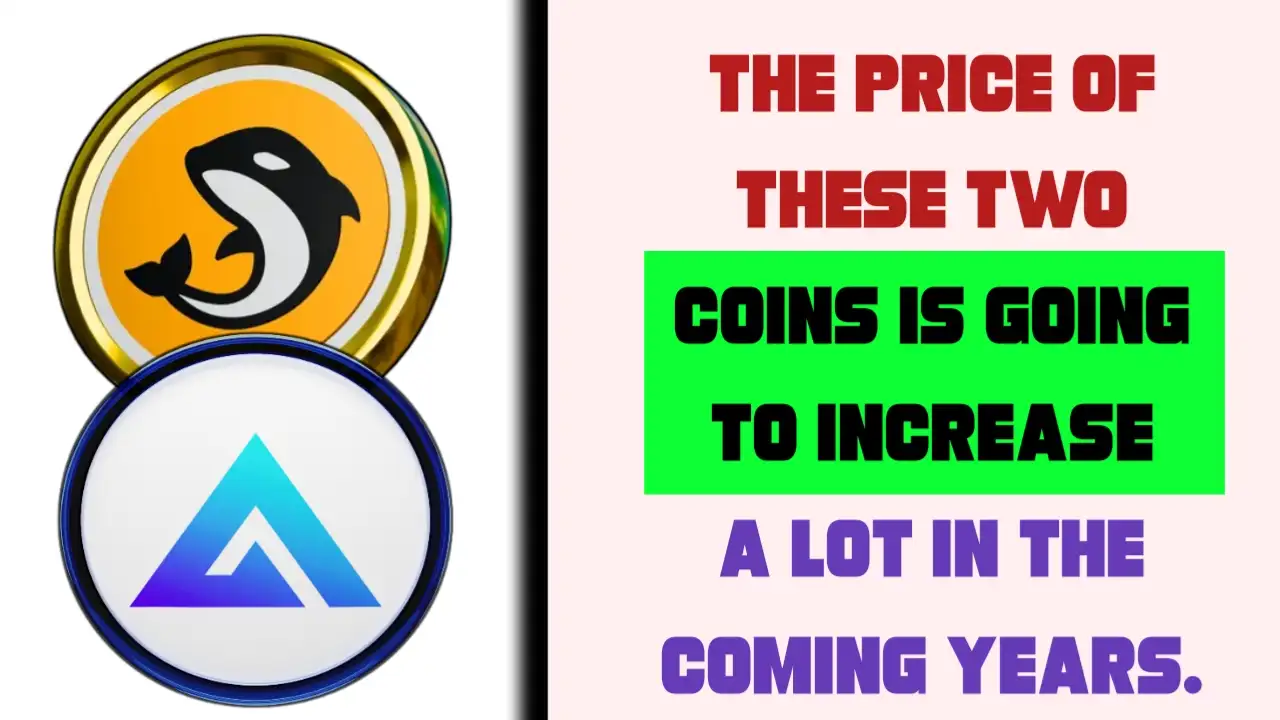BITCOIN HALVING: Bitcoin halving is a key part of Bitcoin’s monetary policy, designed to control inflation by limiting the total supply of the cryptocurrency. The reward started at 50 BTC per block when Bitcoin was launched in 2009, and it halved to 25 BTC in 2012, then to 12.5 BTC in 2016, and to 6.25 BTC in 2020. will reduce the reward to 3.125 BTC.
These halving events create scarcity and are often seen as a catalyst for price increases due to the reduced rate of new coins entering circulation. Bitcoin’s total supply is capped at 21 million, meaning that by around 2140, all bitcoins will have been mined, and no new coins will be created. Historically, Bitcoin halvings have been followed by significant bull markets, though the relationship is not guaranteed. The halving events are crucial for maintaining Bitcoin’s deflationary nature, making it distinct from inflationary fiat currencies.
What is Bitcoin Halving?
Bitcoin halving refers to an event that takes place every four years, where the reward miners receive for validating transactions and adding new blocks to the blockchain is cut in half. This process is essential to Bitcoin’s economic structure, controlling the rate at which new bitcoins are introduced to the system, ultimately affecting the total supply. Here are a few different explanations of Bitcoin halving:
- Technical Explanation: Bitcoin operates on a decentralized, blockchain-based network. Every 210,000 blocks (roughly every four years), the reward is halved to maintain scarcity and control inflation. The reward was reduced to 25 BTC in 2012, 12.5 BTC in 2016, and currently sits at 6.25 BTC, with the next halving expected in 2024, which will reduce it to 3.125 BTC.
- Economic Explanation: Bitcoin’s total supply is capped at 21 million, which is a fundamental characteristic of the cryptocurrency. The halving process ensures that the supply of new bitcoins As the reward decreases, fewer new bitcoins are mined, and this scarcity can lead to an increase in demand, potentially driving up Bitcoin’s price, especially if adoption grows.
- Market Impact Explanation: From a market perspective, Bitcoin halvings are seen as events that could cause significant price movements. In the lead-up to a halving, there is often a buildup in anticipation of reduced supply, which can drive up Bitcoin’s price. After each halving, the market tends to adjust, with some periods of volatility. Historically, halvings have been followed by price surges, although the correlation between halving events and price increases is not guaranteed.
- Mining Explanation: For miners, Bitcoin halving represents both a challenge and an opportunity. As the block reward halves, miners receive less bitcoin for the same amount of work. This can reduce their profit margins, especially if Bitcoin’s price doesn’t rise to compensate for the reduced reward. However, it can also drive efficiency, with miners investing in better hardware and more efficient energy consumption to remain profitable.
In all, Bitcoin halving is a critical mechanism that defines the cryptocurrency’s supply schedule and plays an essential role in its value proposition as a deflationary digital asset.
What are the benefits of Bitcoin Halving
Bitcoin halving brings several key benefits to the Bitcoin network and its broader ecosystem. Here are the primary advantages:
- Controlled Supply and Inflation Reduction: One of the most significant benefits of Bitcoin halving is its ability to control the rate of new bitcoins being introduced into circulation. By halving the mining reward every four years, the supply of new bitcoins is reduced over time, helping to prevent inflation. This predictable supply schedule ensures that Bitcoin’s inflation rate decreases gradually, which contrasts with fiat currencies that can be printed in unlimited quantities, potentially leading to inflation.
- Increased Scarcity: As the reward for mining decreases, fewer new bitcoins are created, leading to increased scarcity. Since Bitcoin’s total supply is capped at 21 million, halving events help reinforce its scarcity, which can boost demand. When there is less of something available, and demand remains strong or increases, the price of that asset can rise. This scarcity-driven aspect is central to Bitcoin’s value proposition as a deflationary digital asset.
- Price Appreciation: Historically, Bitcoin halving events have been associated with significant price increases. While past performance doesn’t guarantee future results, the reduction in new supply tends to create upward pressure on Bitcoin’s price as fewer coins are available for purchase. This can attract more investors, boosting the asset’s value and contributing to greater market interest in Bitcoin.
- Mining Efficiency and Innovation: As Bitcoin block rewards decrease with each halving, miners must optimize their operations to remain profitable. This incentivizes the development of more efficient mining hardware and improved energy utilization. With lower rewards, only miners with the most efficient equipment and operations can remain competitive, which can drive innovation in mining technology and make the Bitcoin network more secure and sustainable.
- Incentivizes Long-Term Investment: Because halving events contribute to reducing Bitcoin’s inflation rate, they can encourage long-term holding and investment. Investors may see Bitcoin as a store of value, similar to gold, due to its scarcity and the predictable reduction in the rate of new coins being mined. This has contributed to Bitcoin’s reputation as “digital gold” and encourages a more stable, long-term approach to investing in the cryptocurrency.
- Network Security and Decentralization: Bitcoin halvings maintain the integrity of the network by ensuring that miners are continuously incentivized to secure the network and validate transactions. Although the mining reward decreases over time, Bitcoin’s increasing value and the transition to relying on transaction fees help ensure the network remains secure, even when the block reward becomes negligible. Additionally, halvings reduce the reliance on centralized entities, as the network remains decentralized and driven by individual miners and users.
- Promotes Mainstream Adoption: As the price of Bitcoin tends to rise following a halving event, the increased attention and market visibility often lead to greater adoption by both retail and institutional investors. The scarcity and deflationary nature of Bitcoin, bolstered by halving events, make it an attractive option for those seeking an alternative to traditional assets and a hedge against inflation.
In summary, Bitcoin halving benefits the network by ensuring controlled supply growth, reducing inflation, increasing scarcity, driving innovation in mining, and boosting Bitcoin’s attractiveness as a long-term store of value. These factors combine to enhance Bitcoin’s overall security, adoption, and potential for price appreciation, solidifying its role as a unique and valuable digital asset.
What are the disadvantages of Bitcoin Halving?
While Bitcoin halving brings several benefits, it also has some potential disadvantages, particularly for miners, the market, and the overall ecosystem. Here are some of the key disadvantages:
- Increased Pressure on Miners: Bitcoin halvings reduce the block reward that miners receive for securing the network. As the reward decreases, miners must rely on transaction fees to remain profitable. This can be particularly challenging if the price of Bitcoin does not increase sufficiently to offset the reduced block reward. Small or inefficient miners may struggle to stay competitive, potentially leading to a concentration of mining power in the hands of large, well-capitalized entities, which could reduce decentralization and make the network more vulnerable to attacks.
- Mining Centralization: As the mining reward decreases, only the most efficient miners—those with access to cheap electricity and advanced mining equipment—are likely to remain profitable. This can lead to a situation where a few large mining operations dominate the network, increasing centralization. This undermines one of Bitcoin’s core principles: decentralization. Centralization of mining power could also make the network more susceptible to 51% attacks or other forms of manipulation.
- Volatility and Speculation: While Bitcoin halving events often lead to price surges, they can also introduce significant volatility. Some traders and speculators may drive up the price in the lead-up to a halving event, followed by a sharp sell-off afterward. This speculative behavior can make the market more unpredictable and create short-term price swings that could deter some potential investors or users from participating in the ecosystem.
- Reduced Miner Incentives: As the reward for mining decreases over time, miners may lose some of their incentive to participate in the network, especially if transaction fees do not rise sufficiently to make up for the lost reward. If miners start to exit the network due to reduced profitability, it could temporarily decrease the security and stability of the Bitcoin network, as fewer miners would be verifying transactions and adding blocks to the blockchain.
- Increased Transaction Fees: As the block reward decreases, miners may rely more on transaction fees for their income. If the Bitcoin price rises significantly post-halving, the fee burden could be passed on to users, making Bitcoin less appealing for small transactions or as a medium of exchange.
- Delayed Impact on Bitcoin’s Price: While halvings often lead to price increases over the long term, the immediate effects on price can be unpredictable. In some cases, the price may not rise as expected, or it may even experience a short-term decline after the halving due to market corrections or profit-taking. This uncertainty can be frustrating for investors who expect a more immediate return following a halving event.
- Potential for Reduced Network Security: In the long term, if the block reward becomes too low and transaction fees do not adequately compensate miners, the security of the Bitcoin network could be compromised. Miners might not find it worthwhile to continue securing the blockchain, and this could lead to slower block times, a decline in network participation, and potential risks to the integrity of the blockchain.
Ways to Make Money from Bitcoin Halving
Bitcoin halving events have historically been associated with increased scarcity and price appreciation, which can provide opportunities to make money. However, it’s important to remember that while halvings have often led to price increases, there’s no guarantee that the same pattern will continue. Here are several ways people might try to make money from Bitcoin halving:
1. Buying Bitcoin Before the Halving (Anticipating Price Increases)
Many investors and traders expect Bitcoin’s price to increase in the months leading up to and after a halving event due to the reduced supply of new bitcoins. By purchasing Bitcoin ahead of time, you’re betting that the price will rise as the halving event reduces the rate of new supply entering the market. If the price increases as expected, you can sell at a profit.
- How to do it: Buy Bitcoin in the months before the halving and hold it until after the halving event when prices typically rise.
- Risk: Bitcoin’s price doesn’t always follow predictable patterns, so this strategy carries risk, especially if the market doesn’t react as anticipated.
2. Trading Bitcoin Around the Halving Event
Some traders engage in short-term trading around halving events, taking advantage of the volatility that typically accompanies these events. Traders may enter positions before the halving and exit after price fluctuations. The volatility caused by speculation and changes in market sentiment can create profitable trading opportunities.
- How to do it: Use technical analysis, monitor price trends, and trade Bitcoin on exchanges. You can use day trading, swing trading, or even options to profit from price movements.
- Risk: Bitcoin’s volatility means prices can fluctuate unpredictably, and traders can face significant losses if they misread the market.
3. Mining Bitcoin (Before the Halving)
Before a halving event, miners receive a larger reward for their efforts (6.25 BTC currently). Some miners may aim to increase their hash rate and maximize profits before the block reward is halved. The period before a halving can be a time to accumulate as much Bitcoin as possible, knowing that post-halving rewards will be reduced.
- How to do it: Set up or optimize your mining equipment ahead of the halving, ensuring you’re mining at maximum efficiency.
- Risk: Mining requires significant upfront investment in hardware, electricity, and maintenance costs. The profitability of mining also depends on Bitcoin’s price, which can be volatile.
4. Investing in Bitcoin-Related Stocks or Products
Some investors choose to gain exposure to Bitcoin through stocks of companies that are involved in Bitcoin mining or blockchain technology. For example, companies that mine Bitcoin or provide mining hardware (such as Bitmain, Riot Blockchain, or Marathon Digital Holdings) can see their stock prices rise when Bitcoin’s price increases after a halving event.
- How to do it: Invest in stocks or ETFs related to Bitcoin mining, blockchain technology, or companies holding large amounts of Bitcoin.
- Risk: These stocks may not correlate directly with Bitcoin’s price, and their performance can be influenced by many other factors beyond halving events.
5. Holding Bitcoin Long-Term (HODLing)
The “HODL” strategy (hold on for dear life) involves buying Bitcoin and holding it over a long period, typically with the expectation that its value will rise over time. Many long-term Bitcoin holders buy in anticipation of halvings, believing that the reduced supply will push the price up in the future.
- How to do it: Buy Bitcoin and store it securely in a wallet for an extended period, holding through halving events.
- Risk: Bitcoin’s price can be highly volatile, and there’s always the possibility that the price does not increase or may even fall.
6. Staking or Earning Yield on Bitcoin
Some platforms allow you to earn interest or yield by lending your Bitcoin to others, participating in Bitcoin-based yield farming, or staking Bitcoin derivatives. These options allow you to generate additional income from your Bitcoin holdings, especially if the value of Bitcoin increases post-halving.
- How to do it: Use decentralized finance (DeFi) platforms, lending services, or yield-generating platforms that accept Bitcoin or Bitcoin-backed assets.
- Risk: There are risks associated with lending and yield farming, including the potential for platform failure, theft, or significant market losses.
7. Bitcoin Derivatives and Futures Trading
Bitcoin futures and other derivatives can offer opportunities to profit from Bitcoin price movements, especially around halving events. Many futures contracts are available on platforms like the Chicago Mercantile Exchange (CME) or other crypto exchanges.
- How to do it: Use Bitcoin futures or other derivative products to take a position on Bitcoin’s price movement around the halving event.
- Risk: Futures trading involves a high level of risk, including the potential for significant losses if Bitcoin’s price doesn’t move as expected.
8. Investing in Bitcoin-Related Projects or ICOs
Some investors look for opportunities in Bitcoin-related blockchain projects or initial coin offerings (ICOs) that gain attention during or after halving events. A halving event can increase the overall attention on cryptocurrencies, which can boost interest in related projects.
- How to do it: Participate in ICOs or invest in blockchain startups that benefit from the increased attention on Bitcoin.
- Risk: Many projects fail, and the ICO market can be highly speculative, with numerous scams and failed projects.
9. Sell Bitcoin During the Post-Halving Surge
If you own Bitcoin before the halving event, you might decide to sell some or all of your holdings after a price surge, capitalizing on the increased demand and scarcity driven by the halving.
- How to do it: Monitor market conditions closely after the halving, and sell your Bitcoin when the price peaks post-halving.
- Risk: Timing the market is challenging, and there is always the risk that the price might not surge as expected or could drop unexpectedly.
Who can earn money from Bitcoin halving
Various groups of people can potentially earn money from Bitcoin halving events, but the profitability depends on the strategies they employ, their involvement in the Bitcoin ecosystem, and how the market reacts to the halving event. Here are some of the key groups who can benefit from Bitcoin halvings:
1. Bitcoin Investors
- How They Can Earn: Investors who buy Bitcoin ahead of the halving, anticipating price increases, can profit by selling at a higher price after the event. Bitcoin halvings are historically followed by price surges due to reduced supply, making it an attractive time for investors looking to capitalize on scarcity.
- Risk: The price might not always rise as expected, and Bitcoin can be highly volatile, which means there’s a risk of losing money if the market reacts differently than anticipated.
2. Bitcoin Miners
- How They Can Earn: Miners earn money by validating transactions and adding blocks to the blockchain. Although their block reward will be halved during the event (from 6.25 BTC to 3.125 BTC in 2024), they can still earn from transaction fees and by having access to Bitcoin before the reward decrease. Miners who are well-prepared and have efficient equipment can mine Bitcoin at a profit, especially if Bitcoin’s price increases post-halving.
- Risk: The reduced reward per block can make mining less profitable, especially for miners with high operational costs (like energy). Only the most efficient miners, with access to cheap electricity and the latest hardware, will likely remain profitable.
3. Bitcoin Traders
- How They Can Earn: Active traders can take advantage of the price volatility around halving events. By speculating on Bitcoin’s price movements, they can buy before the halving (anticipating a price rise) and sell after, potentially making a profit. Some traders may also use derivatives like futures contracts to profit from short-term price changes.
- Risk: Trading can be risky, especially in the short term. Price fluctuations around a halving event may not always follow predictable patterns, and traders could face significant losses if they misjudge market sentiment.
4. Long-Term Bitcoin Holders (Hodlers)
- How They Can Earn: Long-term Bitcoin holders (referred to as “Hodlers”) invest in Bitcoin with the expectation that its price will appreciate over time. By holding Bitcoin through the halving, they can benefit from future price increases as the event causes reduced supply, which often leads to upward price pressure.
- Risk: The market is volatile, and the price may not rise as expected. Hodlers face the risk of a prolonged bear market or sudden price declines.
5. Bitcoin-Related Companies (e.g., Miners and Service Providers)
- How They Can Earn: Companies involved in Bitcoin mining, wallet services, and other Bitcoin-related businesses can profit by capitalizing on the increased interest in Bitcoin around the halving event. For example, mining hardware manufacturers may see a surge in demand for more efficient mining equipment as miners seek to remain profitable post-halving.
- Risk: These companies also face risks tied to market volatility, such as fluctuating Bitcoin prices or changes in mining difficulty. Increased competition and regulatory challenges could also impact their profitability.
6. DeFi Platforms and Lending Services
- How They Can Earn: Some decentralized finance (DeFi) platforms allow Bitcoin holders to lend out their coins or participate in yield farming, earning interest or fees from the transactions. During the heightened market activity around halving, increased demand for Bitcoin can lead to more activity on such platforms, leading to higher returns for users.
- Risk: DeFi platforms carry risks of smart contract failures, security vulnerabilities, and platform insolvency. There’s also the risk that transaction fees or interest rates may not be as high as anticipated.
7. Bitcoin-Related Stockholders
- How They Can Earn: Investors in companies related to Bitcoin—such as mining companies or firms that hold Bitcoin on their balance sheets—can profit when the price of Bitcoin increases post-halving. Companies like Riot Blockchain or Marathon Digital Holdings, which are heavily involved in Bitcoin mining, can see their stock prices rise as Bitcoin becomes more valuable.
- Risk: Bitcoin-related stocks may not always follow Bitcoin’s price movements, and other factors like company performance, regulations, or market sentiment can affect their value.
8. People Who Buy Bitcoin Derivatives
- How They Can Earn: Some traders and investors buy Bitcoin futures contracts, options, or other derivatives products to profit from Bitcoin’s price movements around halving. By taking a position on whether Bitcoin’s price will rise or fall after the halving, they can make money depending on the outcome.
- Risk: Bitcoin derivatives carry substantial risk, including the potential for large losses if Bitcoin’s price does not move as anticipated.
9. Retail Investors Who Join the Market Early
- How They Can Earn: New investors who enter the Bitcoin market before the halving, taking advantage of lower prices before the event, could see significant returns if the price increases following the halving.
- Risk: As with any speculative investment, there is a risk that the price may not rise, or that the market could face a downturn, leading to financial losses.
10. Developers and Entrepreneurs in the Bitcoin Ecosystem
- How They Can Earn: Developers and entrepreneurs working on Bitcoin-related projects (such as creating wallets, building on top of the Bitcoin network, or offering new services) can benefit from the increased interest in Bitcoin during halving periods. They might also capitalize on increased demand for Bitcoin-based products and services.
- Risk: New projects may face difficulty in gaining adoption, and there’s always the risk of market competition or regulatory challenges.
FAQs –
Q 1. When will bitcoin halving happen
Answer – Halvings take place approximately every four years The most recent halving happened in May 2020, and the one after that is projected to happen when the block height reaches 840,000. The precise date depends on the block mining rate, which can vary slightly, but it typically falls within the given timeframe.
This event will reduce the reward miners receive for confirming transactions by half, from 6.25 BTC to 3.125 BTC.
Q 2. How much money can you earn from bitcoin halving
Answer – The money you can earn from Bitcoin halving depends on factors like the Bitcoin price, mining difficulty, and the block reward. After the 2024 halving, miners will earn 3.125 BTC per block, which is worth whatever the market price of Bitcoin is at that time.
Q 3. Who started bitcoin halving
Answer – Bitcoin halving was designed by Satoshi Nakamoto, the pseudonymous creator of Bitcoin. It was built into the Bitcoin protocol as a way to control inflation by gradually reducing the block reward over time. The first halving occurred in 2012, and subsequent halvings have followed every 210,000 blocks.
Conclusion –
In conclusion, Bitcoin halving is a fundamental event in the cryptocurrency ecosystem, reducing the reward for mining new blocks and controlling the total supply of Bitcoin over time. This mechanism, designed by Bitcoin’s creator Satoshi Nakamoto, occurs approximately every four years and plays a crucial role in driving scarcity, potentially influencing Bitcoin’s price. The next halving in 2024 will reduce the mining reward to 3.125 BTC per block, making it a significant event for miners and investors alike. As Bitcoin approaches its supply cap of 21 million, halvings will continue to shape its economic model and market dynamics.









